Management of Pile End Sediment and Its Influence on the Bearing Characteristics of Bored Pile
Abstract
:1. Introduction
2. Overview of the Field Tests
2.1. Overview of the Site and Test Piles
2.2. Analysis of the Field Pile Foundation Test Results
3. Mathematical Modeling of Single-Pile-Bearing Capacity and Settlement Response Based on the Sediment Effect
3.1. Lateral Friction Resistance Acting Independently in a Straight-Line Phase
3.2. Pile-End-Sediment Compaction Stage
- (1)
- The foundation was assumed to be an idealized semi-infinite elastic medium, and the effect of pile construction on the original stress state of the soil was neglected.
- (2)
- It was assumed that the modulus of elasticity of the soil varied linearly from the soil interface to the end of the pile, and it remained constant below the end of the pile.
- (3)
- It was assumed that the pile body was perfectly synchronized with the soil in contact with its sides in terms of displacement, i.e., the displacement at any point of the pile body was consistent with the displacement at the corresponding contact soil point.
- (4)
- It was assumed that the movement of the pile and soil in the vertical direction was synchronized, and the difference in relative displacement in the horizontal direction was ignored.
3.3. Stage of the Elastic–Plastic Damage After Compaction of Sediment at the Pile End
3.4. Case Studies
4. Numerical Analysis of Drilled Piles with Pile End Sediment
4.1. Geometric Modeling Calculation Parameters
4.2. Finite Element Verification
4.3. Study of the Effect of Different Sediment Thicknesses on the Q–s Relationship
4.4. Study on the Effect of Different Sediment Thicknesses on Axial Force Exertion
4.5. Study on the Effect of Different Sediment Thicknesses on Pile Side Resistance and Pile End Resistance
5. Conclusions
- (1)
- The thickness of the sediment at the pile end has a significant effect on the load–settlement behavior of a single pile. The thicker sediment at the pile bottom has higher compressibility, which leads to a relatively weak bearing capacity of the soil layer at the pile bottom. With an increase in the load, when the load is applied to a certain level, the lower settlement of the pile will suddenly increase due to the compression of the sediment at the pile end.
- (2)
- After sediment compaction, the load required to reach the ultimate bearing capacity of the test pile increases by 900 KN, which indicates that the load required for a bored cast-in-place pile with sediment at the pile end is higher than that of the pile without sediment when it reaches the ultimate load. This discovery highlights the potential ability of the pile-end-sediment compaction to improve the bearing capacity of pile foundations.
- (3)
- The settlement of piles increases with an increase in sediment thickness. When the pile top load is small, this phenomenon is not obvious. With an increase in the pile top load, the compression of sediment leads to a sharp increase in settlement, which becomes more obvious.
- (4)
- The influence of the thickness of the sediment layer on the axial force transfer is mainly reflected in the linear-to-nonlinear transformation of the axial force distribution in the process of load from low to high, as well as in the slight reduction in the axial force at the pile bottom caused by the increase in the thickness of the sediment layer. The increase in the sediment layer thickness means that the transfer efficiency of the pile end resistance decreases, but with the increase in load, the compression effect of the pile end sediment becomes more obvious, which will further change the distribution of the load between the pile side resistance and pile end resistance.
- (5)
- In this study, the influence of the sediment thickness and elastic modulus on the bearing characteristics of bored piles was studied. However, the influence of the other physical properties of sediment, such as the Poisson ratio, density, particle size distribution, and water content of the sediment, was not fully or deeply considered. These factors are what we are going to focus on in future studies.
Author Contributions
Funding
Data Availability Statement
Conflicts of Interest
References
- Ateş, B.; Şadoğlu, E. Experimental Investigation for Group Efficiency of Driven Piles Embedded in Cohesionless Soil. KSCE J. Civ. Eng. 2023, 27, 5123–5134. [Google Scholar]
- Ateş, B.; Şadoğlu, E. Experimental Investigation of Optimum Piles Spacing for Piled Raft Foundation in Sandy Soils. Tek. Dergi 2021, 32, 10477–10493. [Google Scholar] [CrossRef]
- Ateş, B.; Şadoğlu, E. Experimental Investigation of Pile Addition and Length on Bearing Capacity and Settlement of Rafts on Loose Sandy Soil. Afyon Kocatepe Univ. J. Sci. Eng. 2021, 21, 399–407. [Google Scholar]
- Liu, J.L. Experimental study on the effect of pile bottom sediment on the bearing capacity of super-large diameter drilled piles. Geotech. Investig. Surv. 2000, 28, 8–11. [Google Scholar]
- Lou, X.M.; Chen, Q.H.; Yu, Y.W.; Tao, X.W. Analysis of abnormal phenomena in ultimate bearing capacity of bored pile. Chin. J. Geotech. Eng. 2001, 23, 547–551. [Google Scholar]
- Dong, J.R. Influence of pile bottom slime on skin friction and bearing capacity estimation to pile. Ind. Constr. 2009, 39, 93–97. [Google Scholar]
- Mullins, G.; Winters, D. Infrared Thermal Integrity Testing Quality Assurance Test Method to Detect Drilled Shaft Defects; Dept. of Transportation: Washington, DC, USA, 2011. [Google Scholar]
- Feng, L.F. Experimental Studies and Numerical Simulations of the Effects of bottom Sediment on the Vertical Bearing Behaviour of Bored Piles; Tianjin University: Tianjin, China, 2012. [Google Scholar]
- Xiong, Y.C. Research on strength characteristics of sediment and hardening and softening effect of skin friction. Ind. Constr. 2019, 49, 107–114. [Google Scholar]
- Ni, M.; Xu, P.; Ding, X.; Mei, G. Physical and numerical modelling of axially loaded bored piles with debris at the pile tip. Comput. Geotech. 2019, 114, 103–146. [Google Scholar]
- Zhu, L.-H. Vertical Bearing Capacity Test and Finite Element Analysis on Large-Diameter Deep-Length Bored Cast-in-Situ Pile. Master’s Thesis, Chongqing Jiaotong University, Chongqing, China, 2012. [Google Scholar]
- Zhao, J.Q. Research and Controlling on Settlement Characteristic of Rotary Drilling Pile Considering the Bottom Sediment; Chongqing University: Chongqing, China, 2014. [Google Scholar]
- Huang, W.Y. Study on influence of pile bottom sediment on mechanical properties of cast-in-place pile. China Energy Environ. Prot. 2018, 40, 62–67. [Google Scholar]
- Lin, M.G.; Huang, X.L.; Han, D.D.; Shi, H. Numerical Simulation Research on Influence of Pile Tip Sediment on Bearing Capacity of Bored Pile. Highway 2021, 66, 116–122. [Google Scholar]
- Mei, G.X.; Hu, C.B.; Mei, L. Indoor model test of pile foundation using sediment at pile bottom. Chin. J. Rock. Mech. Eng. 2011, 30 (Suppl. S1), 3252–3259. [Google Scholar]
- Zhang, Q.Q. Bearing mechanism and response analysis method of vertically loaded piles. J. Shandong Univ. Sci. Technol. (Nat. Sci.) 2020, 39, 93–105. [Google Scholar]
- Yuan, C.X.; Zhen, X.D.; Chen, K. Effect of excavation beneath for a new subway station on the shaft resistance of an existing pile. J. Civ. Environ. Eng. 2024. early access. [Google Scholar]
- Vijayvergiya, V.N.; Focht, J.A. A new way to predict capacity of piles in clay. In Proceedings of the 4th Annual Offshore Technology Conference, Houston, TX, USA, 5–8 May 1972; pp. 865–874. [Google Scholar]
- Zheng, G.; Peng, S.Y.; Ng, C.W.; Diao, Y. Excavation effects on pile behaviour and capacity. Can. Geotech. J. 2012, 49, 1347–1356. [Google Scholar] [CrossRef]
- Kulhawy, F.H.; Prakoso, W.A.; Zhang, L.; Einstein, H.H. End bearing capacity of drilled shafts in rock. J. Geotech. Geoenviron. Eng. 1999, 125, 1106–1110. [Google Scholar] [CrossRef]
- Poulos, H.G. Settlement of single piles in nonhomogeneous soil. J. Geotech. Eng. Div. 1979, 105, 627–641. [Google Scholar] [CrossRef]
- Zhang, L.; Ernst, H.; Einstein, H.H. Nonlinear analysis of laterally loadedrock-socketed shafts. J. Geotech. Geoenviron. Eng. 2000, 126, 955–968. [Google Scholar]
- Desai, C.S. Numerical design-analysis for piles in sands. J. Geotech. Eng. Div. 1974, 100, 613–635. [Google Scholar] [CrossRef]
- Ateş, B.; Şadoglu, E. Experimental and Numerical Investigation for Vertical Stress Increments of Model Piled Raft Foundation in Sandy Soil. Iran. J. Sci. Technol. Trans. Civ. Eng. 2022, 46, 309–326. [Google Scholar] [CrossRef]
- Ateş, B.; Şadoğlu, E. Experimental and Numerical Investigation of Single Pile Subjected to Vertical Load in Sand. In Proceedings of the 3rd International Conference on Advanced Engineering Technologies, Surabaya, Indonesia, 2 October 2021. [Google Scholar]





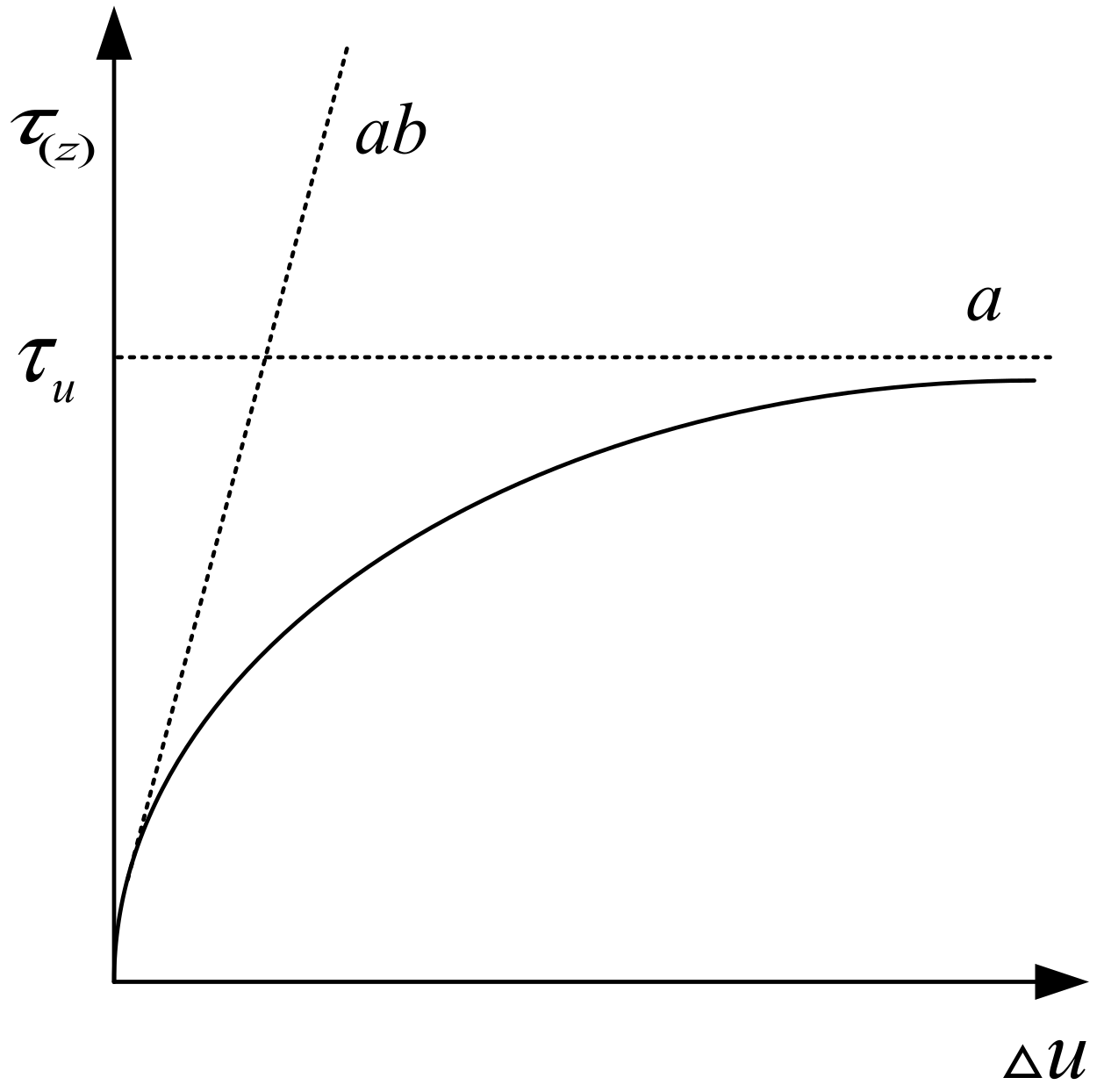


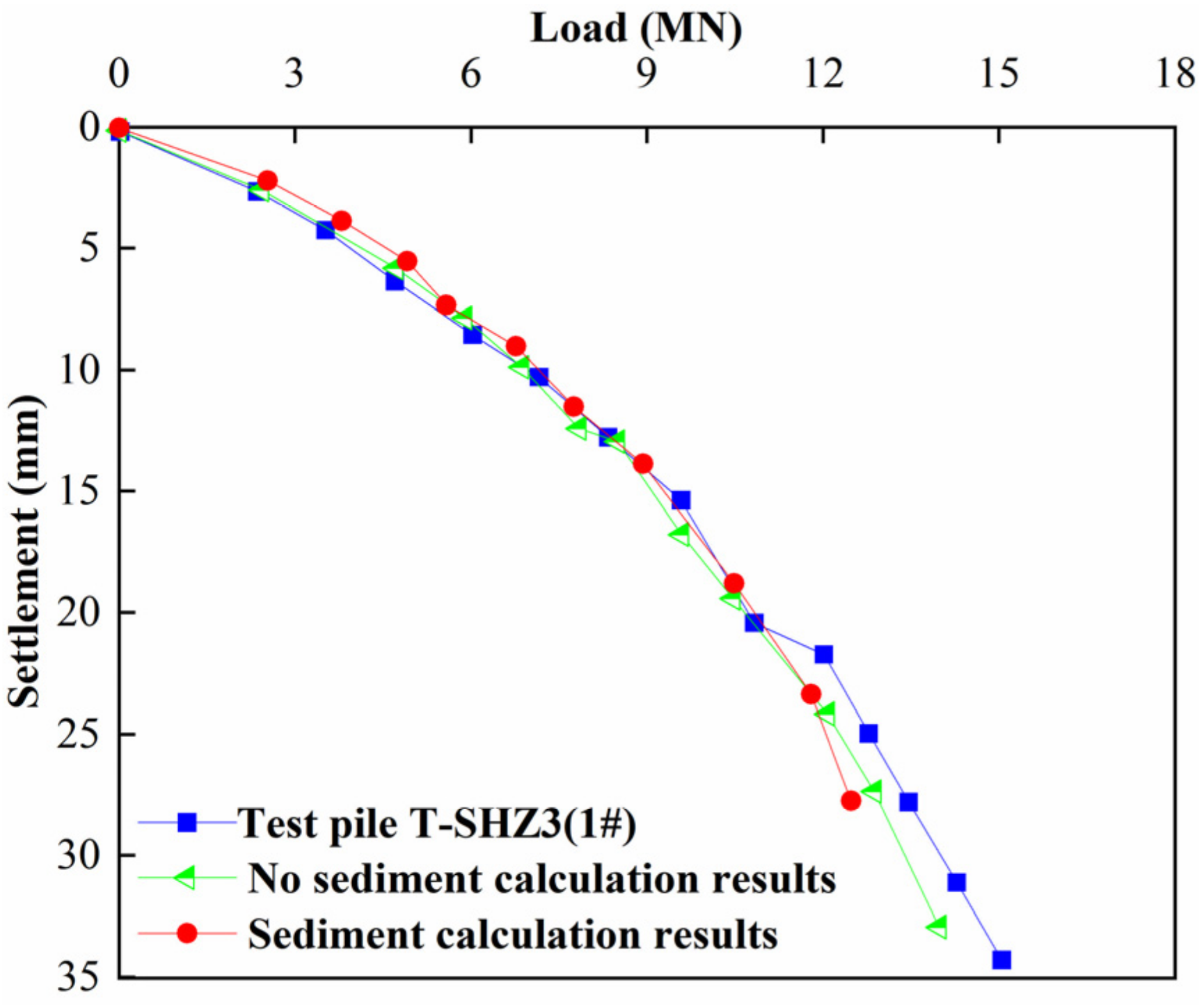
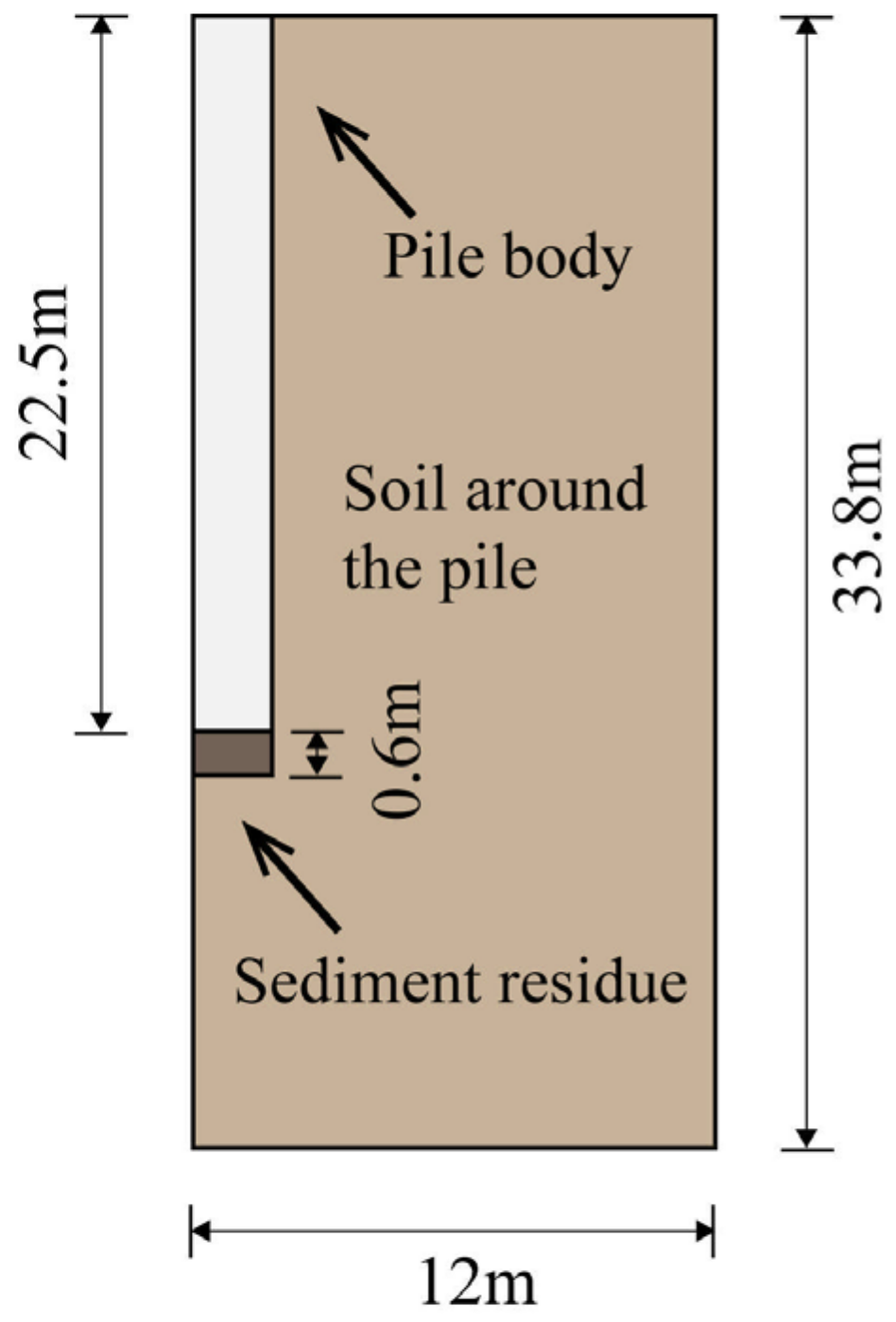
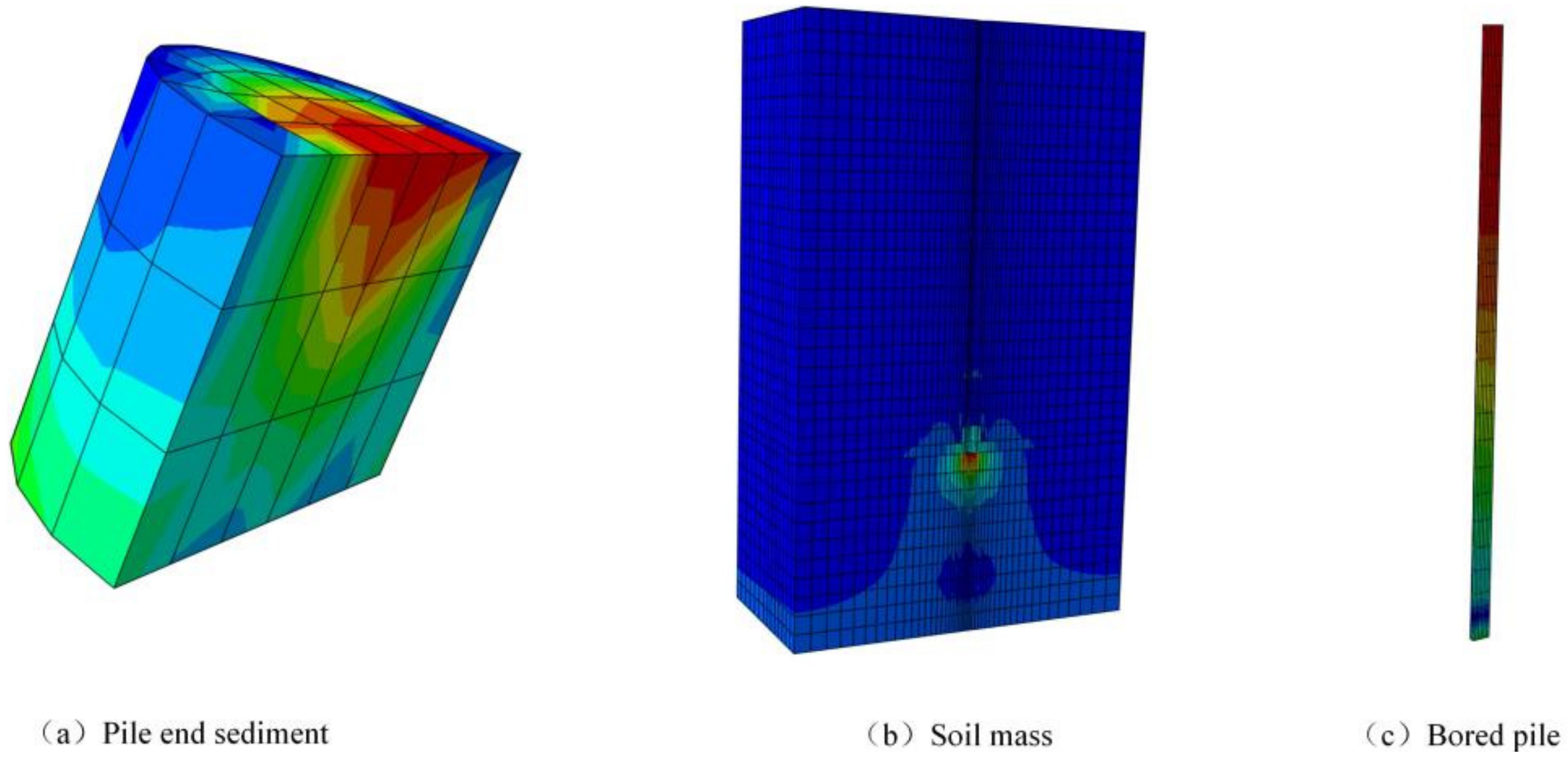
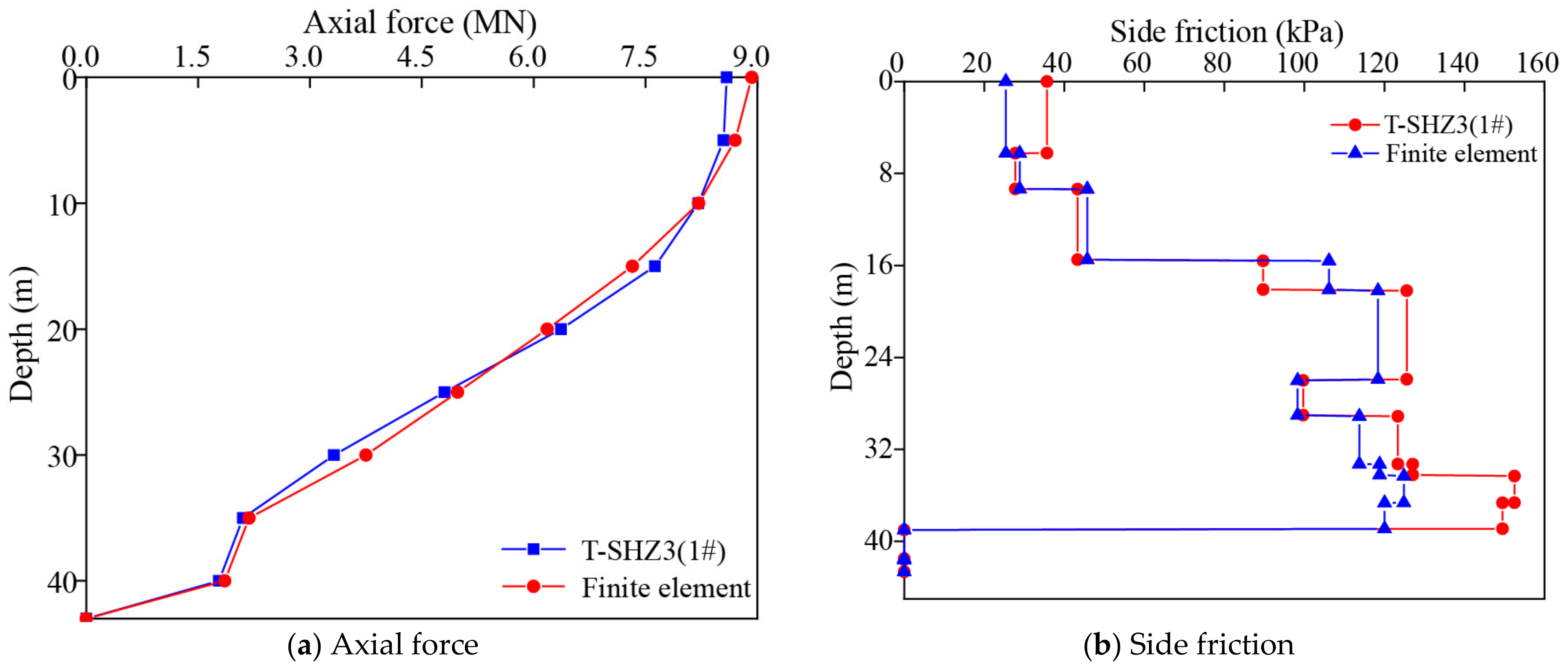
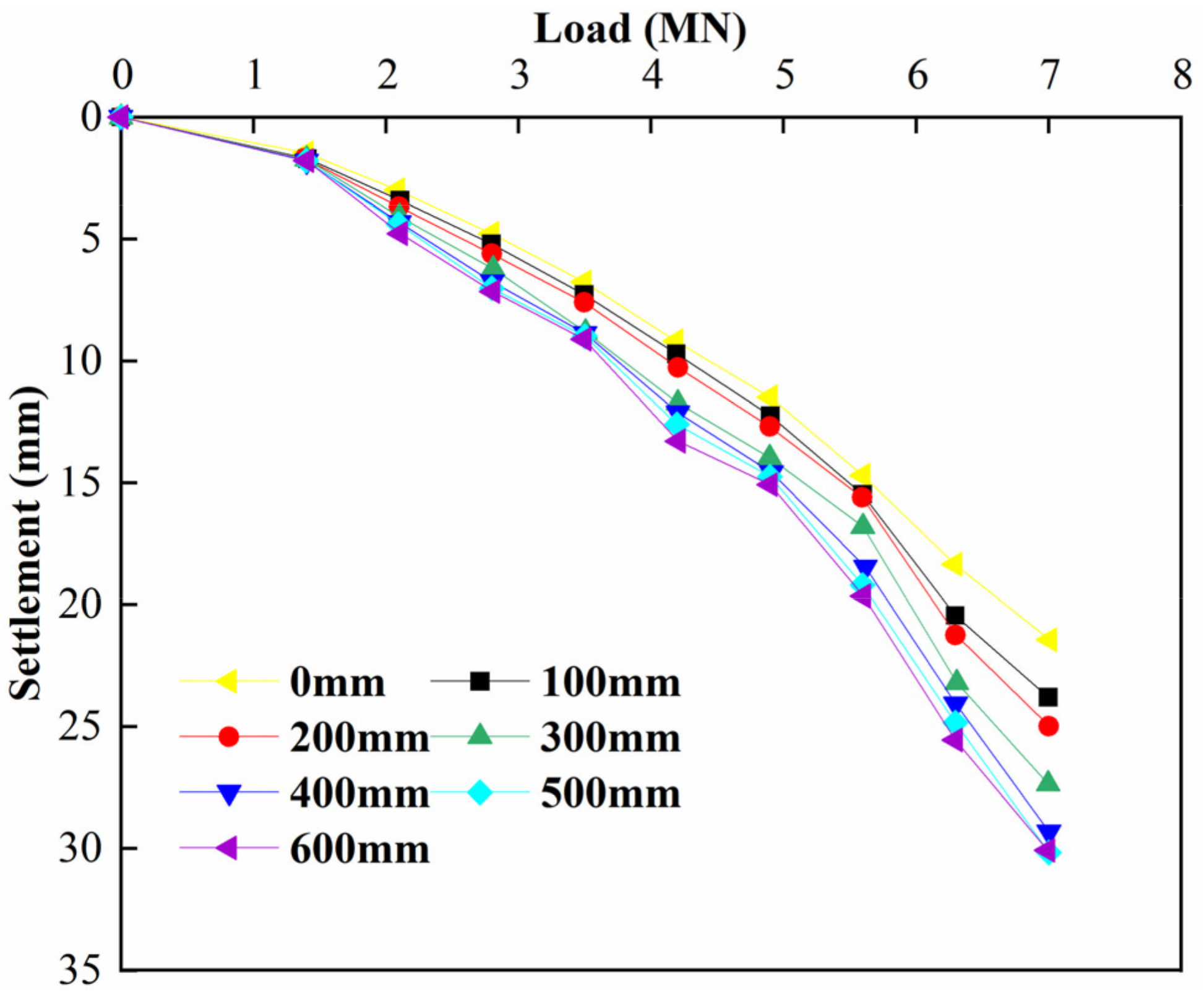

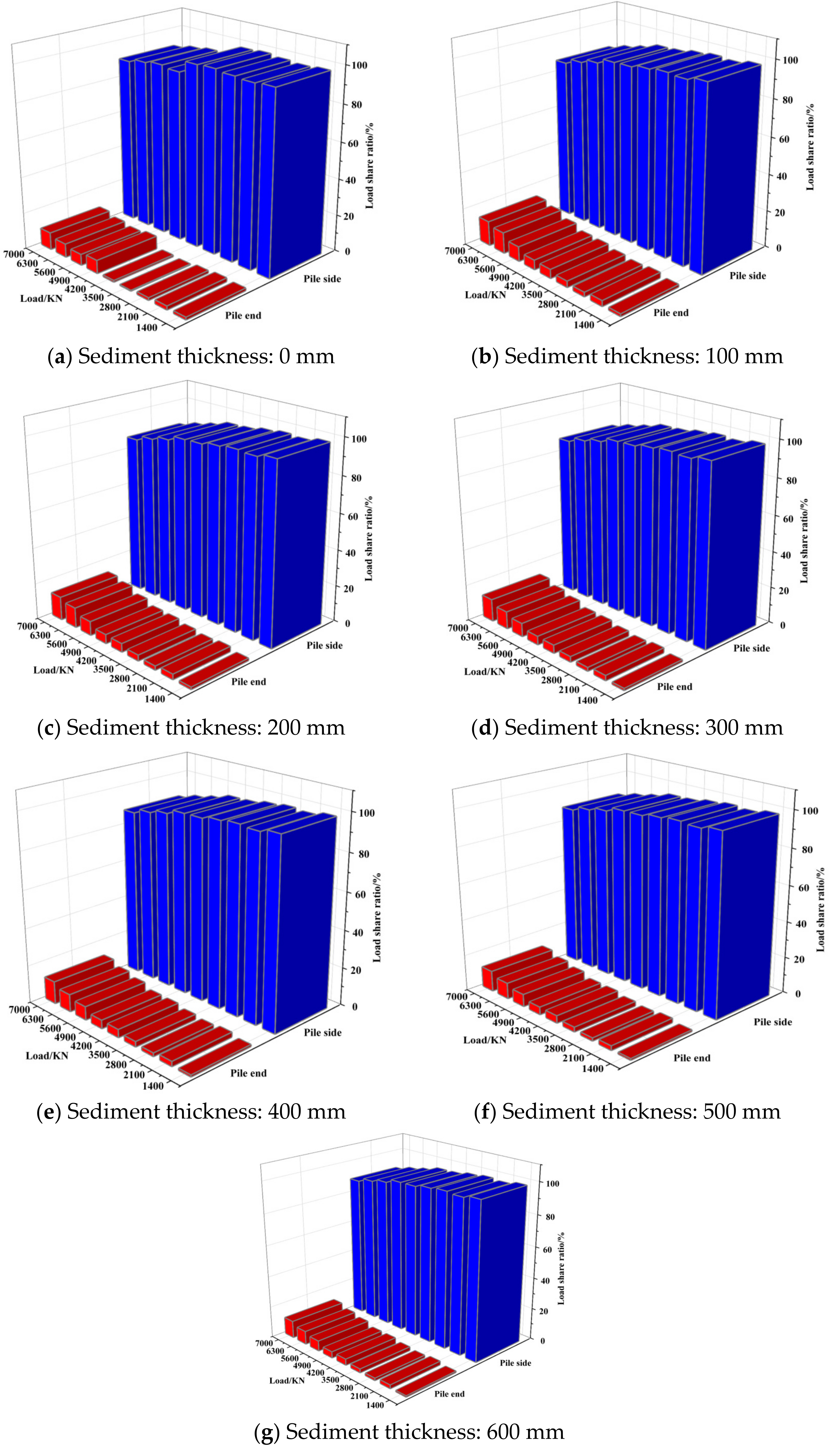
| Stratum Number | Stratigraphic Name | Elastic Modulus (MPa) | Poisson’s Ratio | Internal Friction Angle (/°) | Cohesion (c/KPa) | Gravity (γ/KN·m−3) | Water Content (%) | Saturation Degree (%) | Constrained Modulus (MPa) |
|---|---|---|---|---|---|---|---|---|---|
| ②-1 | Loess silty soil | 9.5 | 0.2 | 24.5 | 27.8 | 18 | 12.56 | 36.88 | 7.74 |
| ④-1 | Silty soil | 15 | 0.25 | 30 | 3 | 19 | 19.0 | 63.7 | 8.56 |
| ⑥-1A | Silty clay | 35 | 0.25 | 40 | 3 | 21.8 | 21.1 | 79 | 12.73 |
| ⑥-1B | Silty soil | 10 | 0.35 | 21.5 | 23.6 | 19.5 | 23.89 | 83.95 | 6.92 |
| ⑧-1 | Silty clay | 7 | 0.3 | 21.4 | 23.5 | 19.6 | 22.5 | 86.9 | 10.67 |
| Pile Number | Pile Diameter/m | Pile Length/m | Sediment Thickness/mm |
|---|---|---|---|
| 1# | 0.8 | 41 | 90 |
| 2# | 0.8 | 41 | 70 |
| Soil Horizon | Elastic Modulus (MPa) | Poisson’s Ratio | Internal Friction Angle (/°) | Cohesion (kPa) | Gravity (KN·m−3) |
|---|---|---|---|---|---|
| Sediment | 2 | 0.2 | 30 | 1 | 19.6 |
Disclaimer/Publisher’s Note: The statements, opinions and data contained in all publications are solely those of the individual author(s) and contributor(s) and not of MDPI and/or the editor(s). MDPI and/or the editor(s) disclaim responsibility for any injury to people or property resulting from any ideas, methods, instructions or products referred to in the content. |
© 2025 by the authors. Licensee MDPI, Basel, Switzerland. This article is an open access article distributed under the terms and conditions of the Creative Commons Attribution (CC BY) license (https://creativecommons.org/licenses/by/4.0/).
Share and Cite
Song, W.; Wang, Z.; Zhu, W.; Yang, J.; Zeng, J. Management of Pile End Sediment and Its Influence on the Bearing Characteristics of Bored Pile. Buildings 2025, 15, 1389. https://doi.org/10.3390/buildings15081389
Song W, Wang Z, Zhu W, Yang J, Zeng J. Management of Pile End Sediment and Its Influence on the Bearing Characteristics of Bored Pile. Buildings. 2025; 15(8):1389. https://doi.org/10.3390/buildings15081389
Chicago/Turabian StyleSong, Weibin, Zhengzhen Wang, Wentao Zhu, Junping Yang, and Jianming Zeng. 2025. "Management of Pile End Sediment and Its Influence on the Bearing Characteristics of Bored Pile" Buildings 15, no. 8: 1389. https://doi.org/10.3390/buildings15081389
APA StyleSong, W., Wang, Z., Zhu, W., Yang, J., & Zeng, J. (2025). Management of Pile End Sediment and Its Influence on the Bearing Characteristics of Bored Pile. Buildings, 15(8), 1389. https://doi.org/10.3390/buildings15081389






